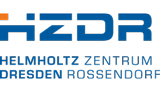Department of Biogeochemistry
Research in the Biogeochemistry department focuses on understanding the interaction of long-lived radionuclides with biosystems. We are interested in the various levels from biomolecules to individual organisms and complex biocoenoses. On the one hand, the aim is to understand the influence of biological systems on the behavior of radionuclides in the environment (release, mobility and bioavailability). On the other hand, we investigate the effects of radionuclides on the metabolism of cells and the whole organism (uptake, accumulation, chemo- and radiotoxicity) and the resulting dangers for us humans.
Using state-of-the-art molecular biological, spectroscopic and microscopic methods, we work in the fields of repository research to improve the long-term safety of a repository for high-level radioactive waste and radioecology to protect humans and the environment from the dangers of naturally and artificially released radionuclides.
In addition to basic research, our aim is to use the knowledge gained to develop innovative remediation methods and improve models to describe the behavior of radionuclides in the environment.
Interested in working with us?
To support our work, we are always looking for students and interns from the fields of biology, chemistry and environmental sciences who either want to write their thesis with us or simply gain practical experience. Are you interested? Then please get in touch to clarify any questions you may have.
Current research topics
- Determination of the microbial diversity in water and soil environments contaminated with heavy metals and radionuclides as well as in different host rocks for potential radioactive waste disposals
- Microbe-radionuclide-interactions with reference strains and isolates
- Interaction of eukaryotic cells with radionuclides and lanthanides in particular with plants, fungi, sponges and algae
- Investigation of the interaction of selected bioligands and model compounds with f-elements
- Characterization of microbial processes affecting the conditions in deep geological repositories for radioactive waste (e.g. transformation of bentonite as barrier material)
- Calculation and determination of the metal speciation relevant to the environment
- Verification and validation of transport models
- Characterization of particles in the environment relevant to the transport of radionuclides
- Investigation of the transport processes of radionuclides by particles (including microbes) in natural water
Latest Publication
Effect of Ba(II), Eu(III), and U(VI) on rat NRK-52E and human HEK-293 kidney cells in vitro
Senwitz, C.; Butscher, D.; Holtmann, L.; Vogel, M.; Steudtner, R.; Drobot, B.; Stumpf, T.; Barkleit, A.; Heller, A.
Heavy metals pose a potential health risk to humans when they enter the organism. Renal excretion is one of the elimination pathways and, therefore, investigations with kidney cells are of particular interest. In the present study, the effects of Ba(II), Eu(III), and U(VI) on rat and human renal cells were investigated in vitro. A combination of microscopic, biochemical, analytical, and spectroscopic methods was used to assess cell viability, cell death mechanisms, and intracellular metal uptake of exposed cells as well as metal speciation in cell culture medium and inside cells.
For Eu(III) and U(VI), cytotoxicity and intracellular uptake are positively correlated and depend on concentration and exposure time. An enhanced apoptosis occurs upon Eu(III) exposure whereas U(VI) exposure leads to enhanced apoptosis and (secondary) necrosis. In contrast to that, Ba(II) exhibits no cytotoxic effect at all and its intracellular uptake is time-independently very low. In general, both cell lines give similar results with rat cells being more sensitive than human cells.
The dominant binding motifs of Eu(III) in cell culture medium as well as cell suspensions are (organo-) phosphate groups. Additionally, a protein complex is formed in medium at low Eu(III) concentration. In contrast, U(VI) forms a carbonate complex in cell culture medium as well as each one phosphate and carbonate complex in cell suspensions. Using chemical microscopy, Eu(III) was localized in granular, vesicular compartments near the nucleus and the intracellular Eu(III) species equals the one in cell suspensions.
Overall, this study contributes to a better understanding of the interactions of Ba(II), Eu(III), and U(VI) on a cellular and molecular level. Since Ba(II) and Eu(III) serve as inactive analogs of the radioactive Ra(II) and Am(III)/Cm(III), the results of this study are also of importance for the health risk assessment of these radionuclides.
Keywords: Cytotoxicity; Radionuclides; Kidney cells; Heavy metal speciation; TRLFS; Chemical microscopy
-
 Science of the Total Environment 923(2024), 171374-171394
Science of the Total Environment 923(2024), 171374-171394
DOI: 10.1016/j.scitotenv.2024.171374
Projects
- RadoNorm: Towards effective radiation protection based on improved scientific evidence and social considerations - focus on radon and NORM, EC project, grant number: 900009, duration: 01.09.2020-31.08.2025
- EURAD-MAGIC, NEA/EU project, grant number: 847593, duration: 01.06.2019-31.05.2024
- EURAD-ConCorD, NEA/EU project, grant number: 847593, duration: 01.06.2021-31.05.2024
- RENA/BMBF project, grant number: 02NUK066A, duration: 01.09.2021-31.08.2024
- PepTight/BMBF project, grant number: 031B1122A, duration: 01.09.2021-31.08.2024
- TRAVARIS/BMBF project, grant number: 15S9437C, duration: 01.11.2022-31.10.2025
- UMB-II/BMWi project, grant number: 02E11870B, duration: 01.01.2021-30.06.2025
- PIANOFORTE/EU project, grant number: 101061037, duration: 01.06.2022-31.05.2027
An overview of completed projects can be found here.
Team
Head | |||||
| Name | Bld./Office | +49 351 260 | |||
|---|---|---|---|---|---|
| Dr. Johannes Raff | 801/P314 | 2951 | j.raff | ||
Employees | |||||
| Name | Bld./Office | +49 351 260 | |||
| Rahel Bertheau | 801/P354 | 3138 | |||
| Julia Marie Dauwe | 801/P306 | 2860 | j.dauwe | ||
| Dr. Björn Drobot | 801/P317 | 2895 | b.drobot | ||
| Katrin Flemming | 801/P309 | 2958 | k.flemming | ||
| Dr. Alix Günther | 801/P256 | 2433 2522 | a.guenther | ||
| Max Klotzsche | 801/P306 | 3241 | m.klotzsche | ||
| Dr. Evelyn Krawczyk-Bärsch | 801/P252 | 2076 | e.krawczyk-baersch | ||
| Raul Eduardo Linares Jimenez | 801/P205 | 2438 | r.linares-jimenez | ||
| Dr. Henry Moll | 801/P256 | 2433 2549 | h.moll | ||
| Antonio Newman Portela | 801/P103 | 2720 | a.newman-portela | ||
| Dr. Susanne Sachs | 801/P208 | 2436 | s.sachs | ||
| Jana Seibt | 801/P219 | 3194 2510 | j.seibt | ||
| Dr. Robin Steudtner | 801/P317 | 2895 | r.steudtner | ||
| Lukas Waurick | 801/P306 | 3241 | l.waurick | ||
MICRONUC | |||||
| Name | Bld./Office | +49 351 260 | |||
| Dr. Andrea Cherkouk | 801/P356 | 2989 | a.cherkouk | ||
| Sindy Kluge | 801/P219 | 3194 | s.kluge | ||
| Dr. Nicole Matschiavelli | 801/P318 | 2759 | n.matschiavelli | ||
| Dr. Ting-Shyang Wei | 801/P318 | 2759 | t.wei | ||

